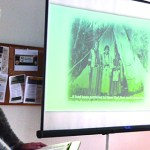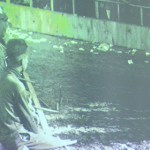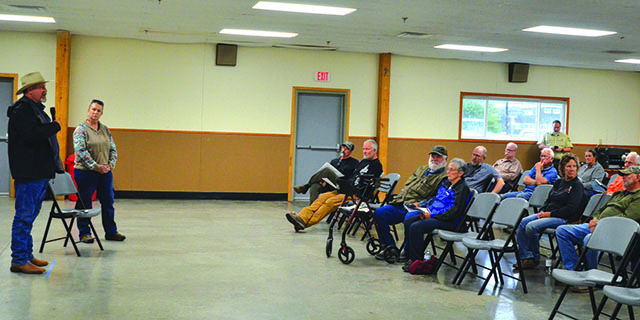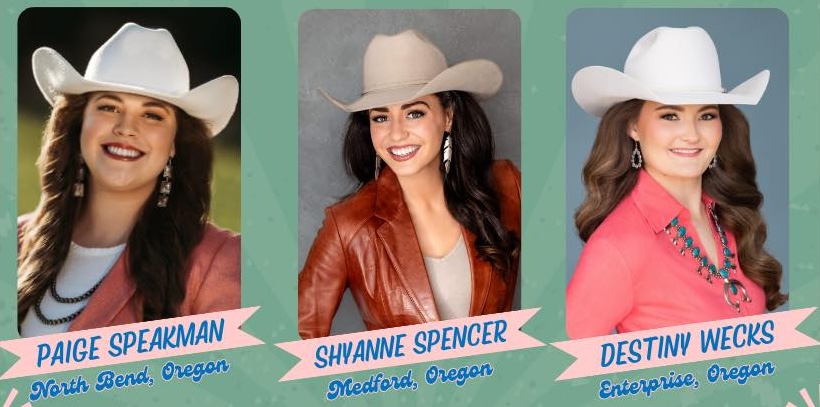Book reflects on last days of Nez Perce in Wallowa County
Published 5:49 pm Monday, March 17, 2025



LOSTINE — About 50 people gathered Sunday, March 9, for the final discussion of “Wallowa Country, 1867-1877,” a book by Grace Bartlett on the early days of what is now Wallowa County.
The gathering, known as the “Little Read,” was sponsored by the Wallowa History Center and held at the South Fork Grange in Lostine.
The 79-page book covers the last 10 years of the time the Nez Perce Tribe lived in their ancestral homeland here and the first decade of white settlement. Copies of Bartlett’s book are available to purchase from the Bookloft in Enterprise, the Josephy Center for Arts and Culture in Joseph and the Wallowa History Center in Wallowa.
Final episode
Trending
Sunday’s discussion was the fifth and final one on the book and the time it covered. The discussions had been held since Feb. 2 and focused on various episodes during that decade.
Bartlett, who died in 1999, came to the county in the 1930s, according to David Weaver, a local historian who was the main presenter Sunday.
He said Bartlett had a particular interest in history and the skills to do something with it.
“Grace was quite the fine writer and was well educated,” he said.
Although she was here well after the tribe had left, she spent much time with John Horner, a local man who spent much of his life collecting information and artifacts from early settlers.
Early settlement
In Sunday’s final episode discussing the book, Weaver told how whites built their roads along old Indian trails from Elgin into what was then eastern Union County. Wallowa County wasn’t established until 1887.
Trending
He also told how the elder Chief Joseph — the father of the well-known Chief Joseph of the Nez Perce War — was buried near the confluence of two branches of the Wallowa River. He showed a drawing of how the grave was adorned with a log pen with a horse hide draped over it. It also had a wooden post with a bell like a school bell hanging from it. The elder Chief Joseph is now buried at the foot of Wallowa Lake.
Weaver told how the elder Joseph was a staunch friend of the early settlers, at least after the 1855 treaty and before the 1863 “Steal Treaty” reduced the size of the reservation by 90%.
“But the one thing that they had in the back of their minds was they could always return,” Weaver said. “They could always come back here. Why could they come back? Because in 1855 when they signed the (first) treaty, the Yakama, the Cayuse, the Nez Perce, the Palouse, the Umatilla, they put into the treaty rights that they would always have rights to come back to their traditional grazing, hunting, gathering places.”
Friction
But friction between the tribe and the settlers was bound to develop and Weaver showed newspaper accounts of several times around the turn of the 20th century when whites drew up petitions to keep the Indians out.
“There are resolutions where basically they’re complaining about the Indians are killing all the game. They’re coming in, they’re killing the elk and deer, etc.,” Weaver said. “And again, this is 1901, remember. And they’re also complaining that the Indians are catching all the fish. And they’re also complaining that the Indians are bringing in massive herds of horses which are eating all the grazing. And they’re also complaining that the Indians are coming in and getting drunk and being too rowdy. And they’re also complaining that the Indians are bringing in diseased horses which are spreading disease, like Texas mange and other things to the other livestock. And they’re also complaining that Indians would frequently go up to homesteads and ask for flour, sugar, bread, whatever.”
The petitions, he said, went through the county commissioners and would go to the governor, the secretary of the interior and the Bureau of Indian Affairs.
Living together
The last such petition was in 1901, Weaver said, and the two groups seemed to learn to live with each other. The tribe even got involved in the early county fair here and in Pendleton, where they still have a presence. The Nez Perce and other tribes also take part in rodeos and parades in Lewiston, Idaho, and in Walla Walla and Yakima, Washington.
“It’s a different time, and things are changing, and people’s ideas about it all are different,” Weaver said.
Weaver noted that as the tribe’s wealth increased, they considered purchasing land in the county.
“They basically had money in their pocket, right?” he said. “I mean, they could have bought it if there would have been permission here.”
So the tribes have been influenced by American capitalism. In recent years, the tribe has acquired some parcels. In addition to the Homeland Project at Wallowa, they’ve acquired the Hayes Farm at Joseph and the old United Methodist Church in Wallowa, as well as a few other properties. Several years ago, the then-executive director of the tribe, Sam Penney, said he hoped to see the Wallowa County parcels become part of the Lapwai, Idaho-based reservation.
Weaver noted that Bartlett’s writing reflected her opinions about the whole situation with the Nez Perce.
“In academic historic writing, usually the chore for the academic historian is to keep their bias from being observed,” he said. “Grace gives us her opinion. She lays it in there. You can see her in the writing, which I personally really appreciate, and I agree with more.”
The Wallowa History Center is at 602 W. 1st St. in Wallowa. Contact it by phone at 541-886-8000, by email at info@wallowahistory.org or online at Wallowahistory.org.












